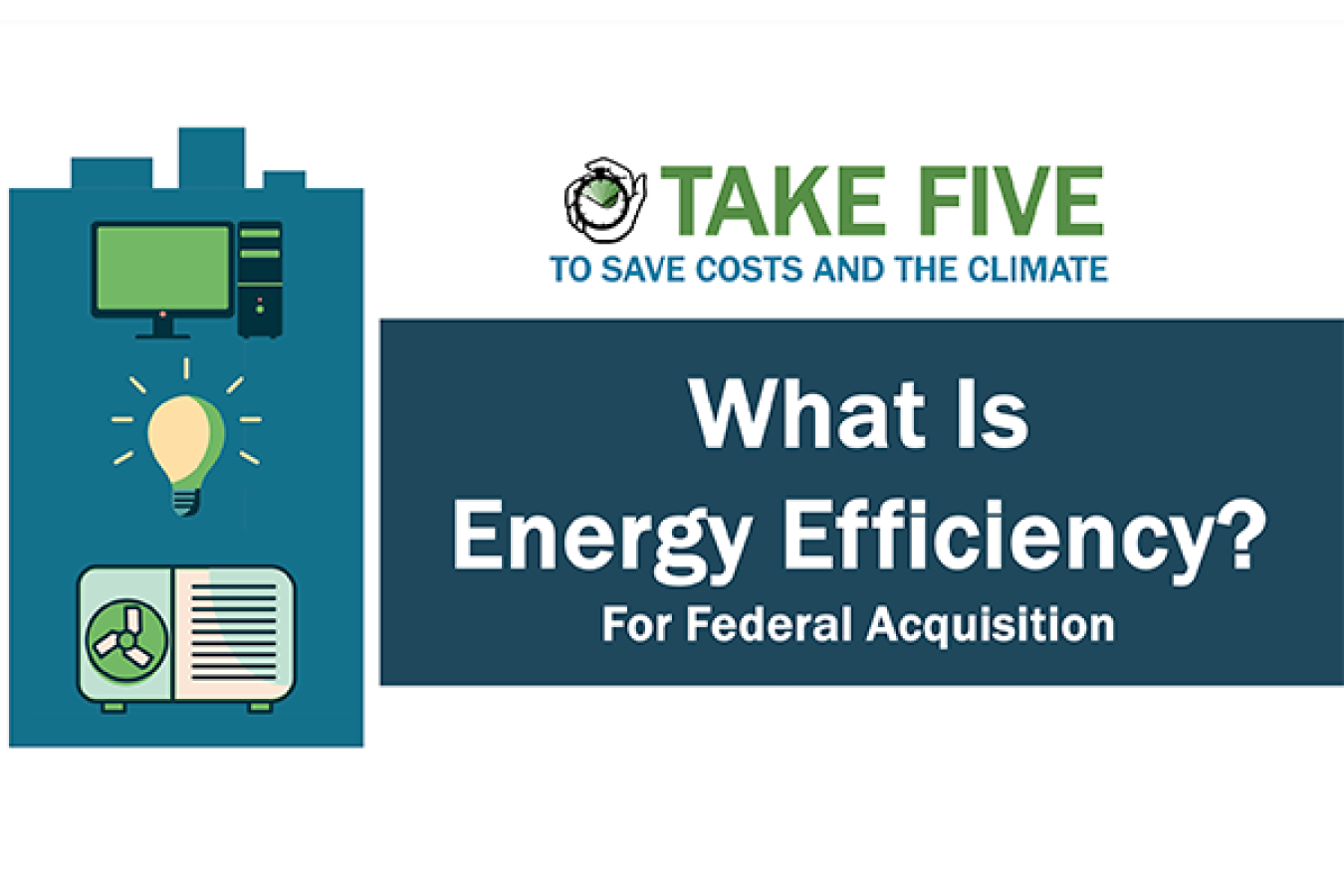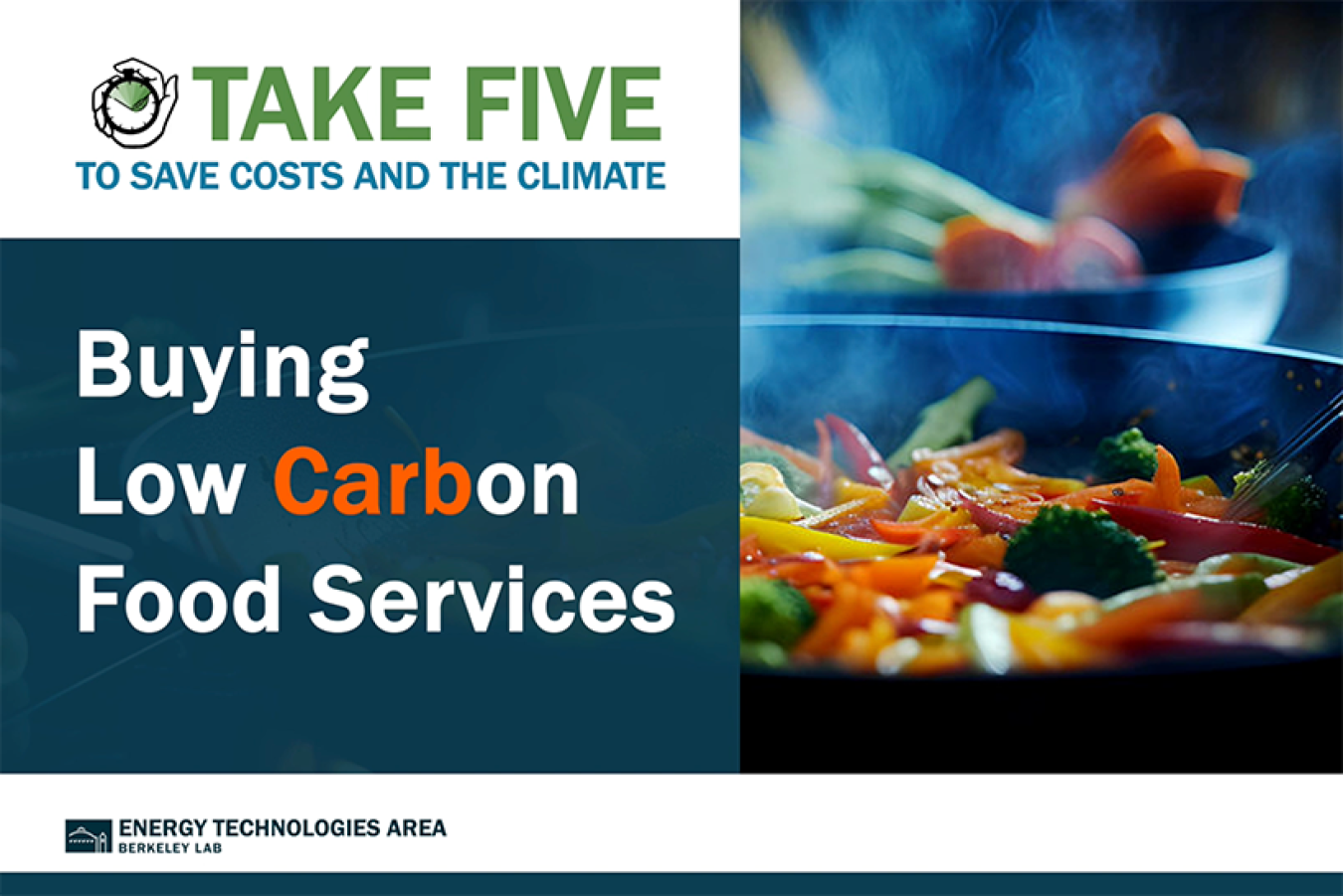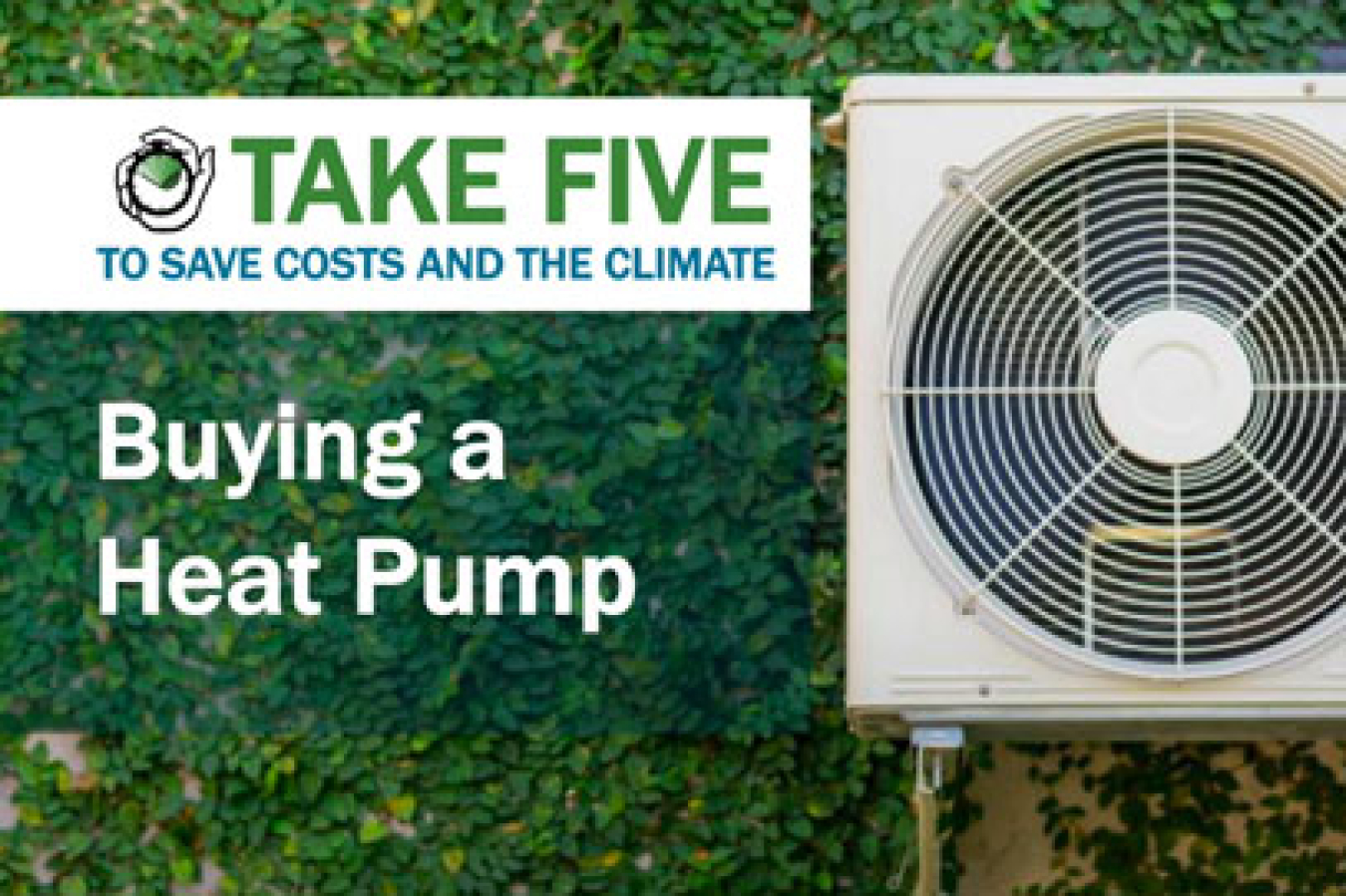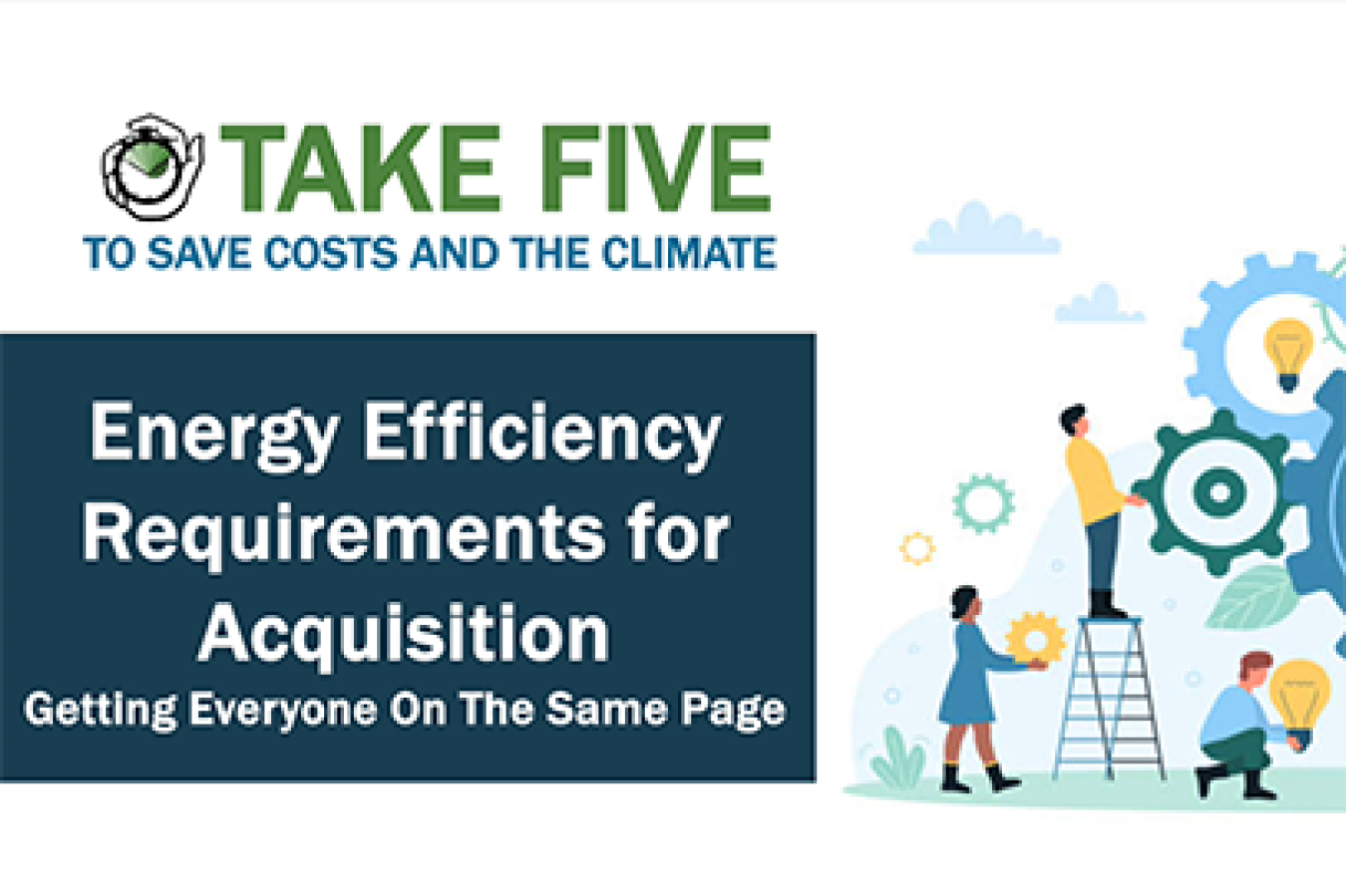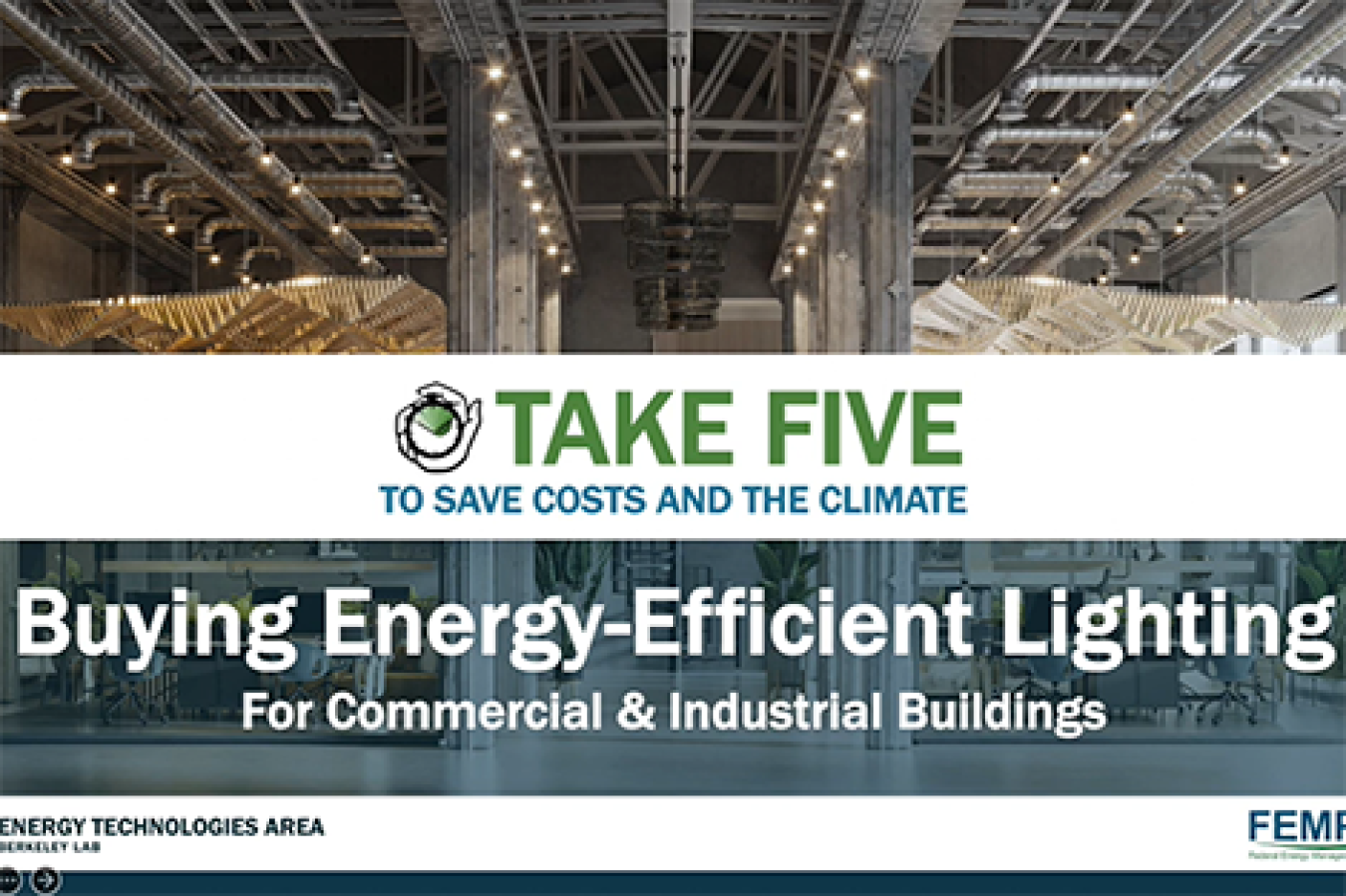This Take Five training covers the why and how of life cycle costing, comparison of life cycle cost savings for different energy-using products, and ensuring that products are cost effective.
Federal Energy Management Program
December 2, 2024Got five minutes? The Take Five training series has you covered with very short trainings in buying clean, efficient goods and services for the federal government.
For federal buyers, it pays to consider the total cost of owning products, especially for products that use energy. Using life cycle cost to guide purchases is not only a federal requirement but can enable optimal cost savings for agencies and taxpayers.
This short training covers the why and how of life cycle costing, comparison of life cycle cost savings for different energy-using products, and ensuring that products are cost effective.
Download a one-page guide for evaluating life cycle costs for acquisition.
MEENA VENKATRAMAN: Hello and welcome to Take Five, a series of quick lessons in sustainable purchasing.
I'm Meena Venkatraman of Berkeley Lab, and today I'll be talking about life cycle costs and how you can apply this concept to your procurements.
This can not only save you money in the long-term, it's also the law.
Life cycle costs are part of the purchasing requirements for anything that uses energy. These requirements can be found in statute and an associated FAR clause.
[On screen, the specific U.S. Code is displayed: 42 USC 8259b FAR Part 23]
The law says buyers must consider life cycle cost and buy the lowest life cycle cost option.
That means buyers should look beyond initial cost, to the total cost of ownership over the product's lifetime.
It's worth considering because the products you buy for your building today could last a long time—for some products, even more than 20 years.
Over their lifetime, these products use energy, water, they might need fixing, and need to be disposed of eventually, which all costs money. Life cycle cost is a way to account for that.
For a simple example of what's usually included in life cycle cost, let's take something that everyone needs in their home or office—light.
You're not just paying for the initial cost of the lightbulb at the store, you're also paying for the energy the lightbulb uses every time you turn it on.
Add up the initial cost and the energy cost, and you get a better idea of the life cycle cost.
Let's say you pay $10 for the lightbulb initially. Then, for energy cost, you need to account for the price of electricity—roughly 10 cents per kilowatt-hour—the amount of energy the lightbulb uses in a year—say 20 kilowatt-hours—and if it lasts 10 years—then that's $20 you're paying for electricity over its lifetime.
So, the total life cycle cost is $30.
From here we can see that the initial cost is really just the tip of the life cycle cost iceberg.
For any product, you need to think not just about the initial cost of the equipment and installation, but also the energy cost as we saw just now, the cost to maintain, repair, or replace the equipment, and the cost to dispose of it.
Now when it comes to energy-using products, sometimes the more efficient ones can have a higher initial cost—but are they really more expensive? Let's check using life cycle cost.
Back to our lighting example, we'll compare a fluorescent lightbulb to an LED lightbulb, which is more efficient. For a fair comparison, we'll get two bulbs with the same light output.
While you're at the store or online, you see the LED bulb costs $10 and the fluorescent, only $5.
So, at first glance, that $5 bulb is looking like a good choice, but let's not forget you'll be paying for the energy to make the bulb work, too.
Following the same steps as the first example, these are the total lifetime costs, accounting for initial cost plus energy cost.
[On screen, two equations appear for each type of lightbulb. The fluorescent bulb's initial cost is $5 plus a lifetime energy cost of $50, making the total lifetime cost $55. The LED bulb's initial cost is $10 plus a lifetime energy cost of $20, making the total lifetime cost $30. The LED bulb is more efficient than the fluorescent bulb.]
So that less efficient fluorescent no longer seems so great.
If you're more of a visual person, here's what the initial cost looks like, plus the energy costs over 10 years to get lifetime cost.
[On screen, a bar chart provides another way to compare the same numbers from the example above.]
If we account for the cost of replacing the fluorescent since LEDs last longer, you'd save even more buying the LED.
These savings might look small here, but buildings don't have just one lightbulb—they have thousands of them, so savings can really add up.
Ok, so this might seem like a lot of steps, but FEMP has done some work to help you compare more efficient and less efficient products.
[On screen appears a list of initial costs that includes energy cost, maintenance cost, and disposal cost.]
In terms of energy cost, here's what goes into the calculation.
[On screen, a list of energy costs is displayed and includes energy use, energy prices, operating hours, product lifetime, discount facts.]
Most of these use federal data so it's especially helpful for agencies.
Efficient products do have other benefits beyond reducing energy cost, but they can be harder to monetize.
Although they're not in the calculation, it's still important to consider benefits like lower carbon emissions, lower healthcare costs from cleaner air, noise reduction, more flexible controls for better quality lighting and thermal comfort, which can help workers be more happy and productive.
So based on this work, FEMP provides a simplified approach for buyers.
Specifically, the law says that buyers can assume that a product is life cycle cost effective if it meets the FEMP-designated efficiency level or is ENERGY STAR certified.
So basically if a product is already compliant with either program, you're good to go in terms of life cycle cost effectiveness.
For a deeper look, see FEMP's web guidance, linked in the one-pager accompanying this training.
On each product webpage—heat pumps, for example—you'll see a table that looks like this one.
[Table appears on screen.]
This table is just saying that an ENERGY STAR heat pump will usually give you around $400 worth of energy savings compared to a typical or base model that's less efficient.
So if you find these two heat pumps with an initial cost difference of $100, you can see the lifetime energy cost savings is way bigger than the initial cost difference, so you should definitely buy the ENERGY STAR one.
The higher the efficiency, the greater the savings generally.
And remember, these savings are just for one heat pump, but think of the number of heating and cooling systems across the tens of thousands of federal buildings.
So use what you've learned today about life cycle costs to buy efficient products for longer term savings and to meet your agency's sustainability goals.
For more on this topic, see GSA's Sustainable Facilities Tool, or SFTool.gov.
You can compare life cycle costs for different products on the "Explore" page, and find more general information and definitions on the "Life Cycle Perspective" page.
Beyond life cycle costs, check out our other Take Five videos, just 5 to 7 minutes long.
These go into more detail about the energy efficiency concepts and acquisition requirements you heard about today, how to procure specific products and services, and other sustainable purchasing topics.
Thanks for tuning in to this edition of Take Five, and thank you for doing your part to meet federal law, save taxpayer dollars, and address climate change.


